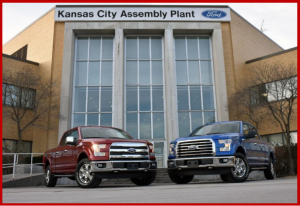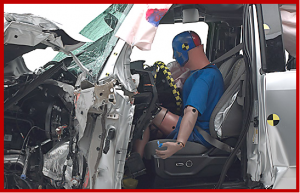The new Ford F-150 is also the only full-size, light-duty truck in the industry to earn the government’s highest 5-star rating for the driver and passenger for all crash test modes and cab configurations – SuperCrew, SuperCab and Regular Cab. F-150 is also the first pickup in America to earn an Insurance Institute for Highway Safety 2015 Top Safety Pick for its SuperCrew model.
However, IIHS said the F-150 extended cab only turned in a good performance in four of five assessments. The problem is the small overlap front test – just a marginal rating for occupant protection in a small overlap front crash. The results are the first ratings for large pickups in a group the Institute is evaluating this year.

“From a simple bolt-on parts replacement to a more-involved removal and installation of entire body panels, fixing the aluminum F-150 is more expensive than repairing a steel-body F-150.”
Test by IIHS also show that the F-150 with its aluminum body can be more complicated and much more expensive to repair than steel. The Institute ran crash tests at 10 mph with the new F-150 crew cab and its 2014 steel-bodied predecessor. Engineers crashed the front left corner of the aluminum pickup into the right rear corner of the steel pickup at a 15% overlap, and then reversed the test and ran the steel pickup into the back of the aluminum one.
In both tests, the aluminum F-150 had more extensive damage than the steel model. Total repair costs for the front and rear damage combined were 26%percent higher for the aluminum F-150. Extra time to repair the aluminum body accounted for the higher price to fix frontal damage, while higher parts costs pushed up the repair bill for the rear damage.
“From a simple bolt-on parts replacement to a more-involved removal and installation of entire body panels, fixing the aluminum F-150 is more expensive than repairing a steel-body F-150,” IIHS said. The IIHS fender-bender tests show the potential implications for out-of-pocket costs as well as insurance premiums when consumers opt for vehicles built with more aluminum.
Ford disputes the repair cost and findings by IIHS, noting that both Allstate and State Farm say insurance costs for the new F-150 remain comparable with 2014 models. (So far without much data.)


